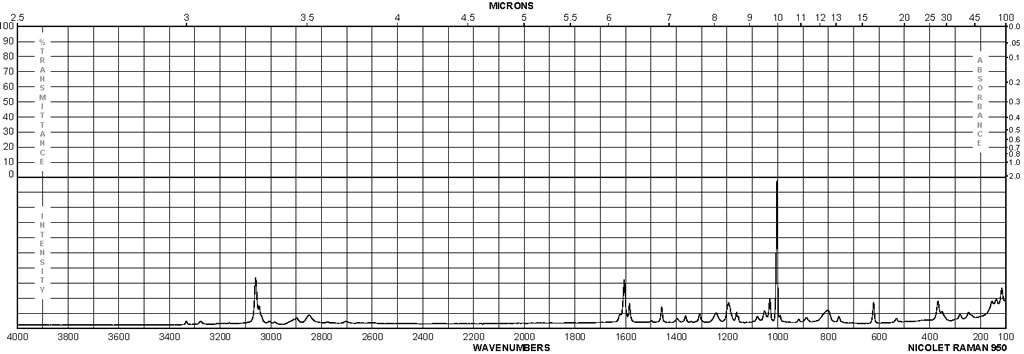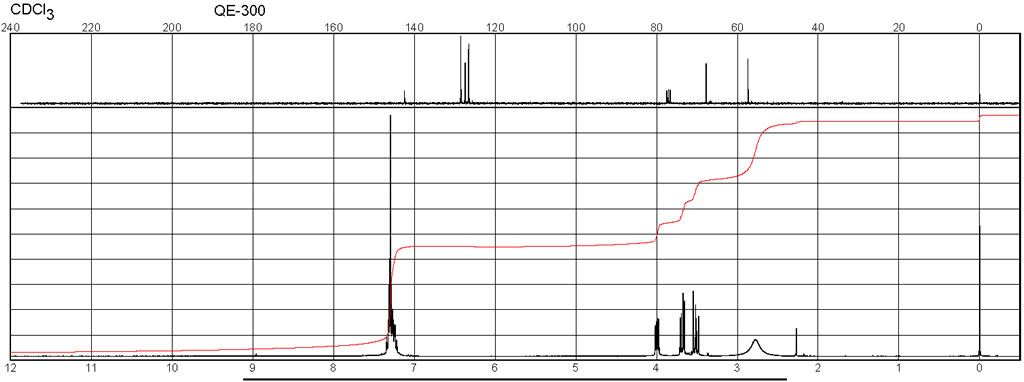(2S)-2-phenylglycinol CAS#: 20989-17-7; ChemWhat Code: 87018
Identification
| Product Name | (2S)-2-phenylglycinol |
| IUPAC Name | (2S)-2-amino-2-phenylethanol |
| Molecular Structure |  |
| CAS Registry Number | 20989-17-7 |
| EINECS Number | 260-287-5 |
| MDL Number | MFCD00064404 |
| Beilstein Registry Number | 3196190 |
| Synonyms | (S)-(+)-2-Phenylglycinol;L-(+)-ALPHA-PHENYLGLYCINOL;L-(+)-A-PHENYLGLYCINOL;L-2-PHENYLGLYCINOL;L-beta-Aminophenethyl alcohol;H-PHG-OL;H-PHENYLGLYCINOL;H-L-PHG-OL;D-2-PHENYLGLYCINOL |
| Molecular Formula | C8H11NO |
| Molecular Weight | 137.18 |
| InChI | InChI=1S/C8H11NO/c9-8(6-10)7-4-2-1-3-5-7/h1-5,8,10H,6,9H2/t8-/m1/s1 |
| InChI Key | IJXJGQCXFSSHNL-MRVPVSSYSA-N |
| Canonical SMILES | C1=CC=C(C=C1)C(CO)N |
| Isomeric SMILES | C1=CC=C(C=C1)[C@@H](CO)N |
Physical Data
| Appearance | White crystalline powder |
| Alpha | -25.5 º (c=6, MeOH) |
| Optical Activity | [α]19/D +33°, c = 0.75 in 1 M HCl |
| Refractive Index | 30 ° (C=1, EtOH) |
| Water Solubility | Soluble in chloroform, dimethylsulfoxide and methanol. Limited Solubulity in water |
| Sensitivity | Air Sensitive |
| Melting Point, °C | Solvent (Melting Point) |
| 71 – 73 | toluene |
| 75 – 78 | hexane, ethyl acetate |
| 76.5 – 78.5 | ethyl acetate, hexane |
| 77 – 78 | diethyl ether |
| Boiling Point, °C | Pressure (Boiling Point), Torr |
| 150 | 15 |
| 127.5 | 5 |
| Description (Association (MCS)) | Solvent (Association (MCS)) | Temperature (Association (MCS)), °C | Comment (Association (MCS)) | Partner (Association (MCS)) |
| Further physical properties of the complex | CH2Cl2 | 25 | concentration dependence | 5,5′-bis[4-(10,15,20-triphenyl-21H,23H-porphin-5-yl)phenylethynyl]-2,2′-hydroxybiphenyl |
| Association with compound | methanol, CHCl3 | 0 | Ratio of solvents: MeOH/CHCl3 9:1 | 3,3-Bis-((8S,10S)-21-hydroxy-8,10-dimethyl-3,6,9,12,15-pentaoxa-bicyclo[15.3.1]henicosa-1(20),17(21),18-trien-19-yl)-3H-isobenzofuran-1-one |
| UV/VIS spectrum of the complex | CHCl3 | 25 | (5S,13S)-21-hydroxy-5,13-bis(3,5-dimethylphenyl)-19-(2,4-dinitrophenylazo)-3,6,9,12,15-pentaoxabicyclo[15.3.1]heneicosa-1(21),17,19-triene | |
| Further physical properties of the complex | dimethylsulfoxide | 30 | time dependence | poly(4-carboxyphenyl isocyanide); Monomer(s): 4-(ethoxycarbonyl)phenyl isocyanide |
| Description (Adsorption (MCS)) | Solvent (Adsorption (MCS)) | Partner (Adsorption (MCS)) |
| Further physical properties of the adsorbed molecule | benzene | bromotymol blue |
Spectra
| Description (NMR Spectroscopy) | Nucleus (NMR Spectroscopy) | Solvents (NMR Spectroscopy) | Temperature (NMR Spectroscopy), °C | Frequency (NMR Spectroscopy), MHz |
| Chemical shifts, Spectrum | 1H | chloroform-d1 | 26.84 | 400 |
| Chemical shifts, Spectrum | 13C | chloroform-d1 | 26.84 | 100.6 |
| Description (IR Spectroscopy) | Solvent (IR Spectroscopy) |
| Bands | potassium bromide |
| Bands | KBr |
| (2S)-2-phenylglycinol CAS 20989-17-7 Raman |  |
| Description (UV/VIS Spectroscopy) | Comment (UV/VIS Spectroscopy) | Absorption Maxima (UV/VIS), nm |
| Spectrum | in the presence of organic compounds | 564 |
Route of Synthesis (ROS)

| Conditions | Yield |
| With lithium aluminium tetrahydride In tetrahydrofuran Heating | 95% |
| With lithium aluminium tetrahydride In tetrahydrofuran for 48h Inert atmosphere Reflux | 89% |
| With lithium borohydride; chloro-trimethyl-silane In tetrahydrofuran 1) 0 degC, 1 h, 2) r.t., 24 h | 85% |
| With sodium tetrahydroborate; boron trifluoride diethyl etherate In tetrahydrofuran at 25℃ for 15h | 81% |
| With lithium aluminium tetrahydride In tetrahydrofuran at 10℃ for 16.5h Inert atmosphere Reflux | 76% |
| With sodium tetrahydroborate; iodine In tetrahydrofuran at 0℃ for 18h Inert atmosphere Sealed tube Reflux |
Safety and Hazards
| Pictogram(s) |   |
| Signal | Danger |
| GHS Hazard Statements | H314: Causes severe skin burns and eye damage [Danger Skin corrosion/irritation] H315: Causes skin irritation [Warning Skin corrosion/irritation] H318: Causes serious eye damage [Danger Serious eye damage/eye irritation] H319: Causes serious eye irritation [Warning Serious eye damage/eye irritation] H335: May cause respiratory irritation [Warning Specific target organ toxicity, single exposure; Respiratory tract irritation] Information may vary between notifications depending on impurities, additives, and other factors. |
| Precautionary Statement Codes | P260, P261, P264, P271, P280, P301+P330+P331, P302+P352, P303+P361+P353, P304+P340, P305+P351+P338, P310, P312, P321, P332+P313, P337+P313, P362, P363, P403+P233, P405, and P501 (The corresponding statement to each P-code can be found at the GHS Classification page.) |
Other Data
| Transportation | Not dangerous goods |
| Under the room temperature and away from light | |
| HS Code | 294200 |
| Storage | Under the room temperature and away from light |
| Shelf Life | 1 year |
| Market Price | USD 200/kg |
| Use Pattern |
| Application as a basic resolving agent to the resolution of chiral carboxylic acid. |
| Used in a synthesis of chiral, unsymmetrical bisoxazolines. |
Buy Reagent | |
| No reagent supplier? | Send quick inquiry to ChemWhat |
| Want to be listed here as a reagent supplier? (Paid service) | Click here to contact ChemWhat |
Approved Manufacturers | |
| DAICEL CHIRAL TECHNOLOGIES (CHINA) CO., LTD. | http://www.daicelchiraltech.cn |
| Apnoke Scientific Ltd. | https://www.apnoke.com/ |
| Want to be listed as an approved manufacturer (Requires approvement)? | Please download and fill out this form and send back to approved-manufacturers@chemwhat.com |
Other Suppliers | |
| Watson International Limited | Visit Watson Official Website |
Contact Us for Other Help | |
| Contact us for other information or services | Click here to contact ChemWhat |


